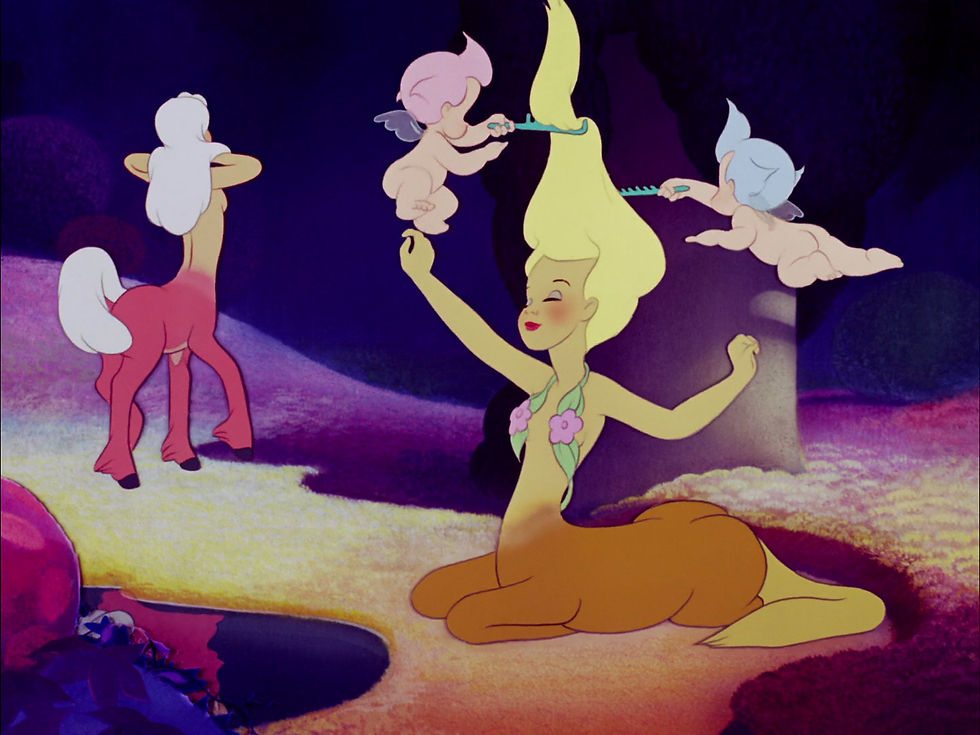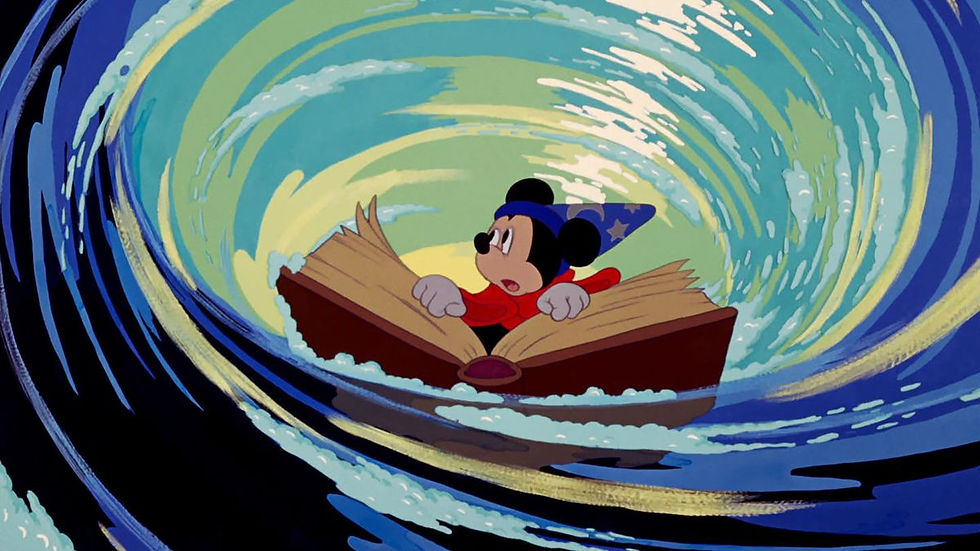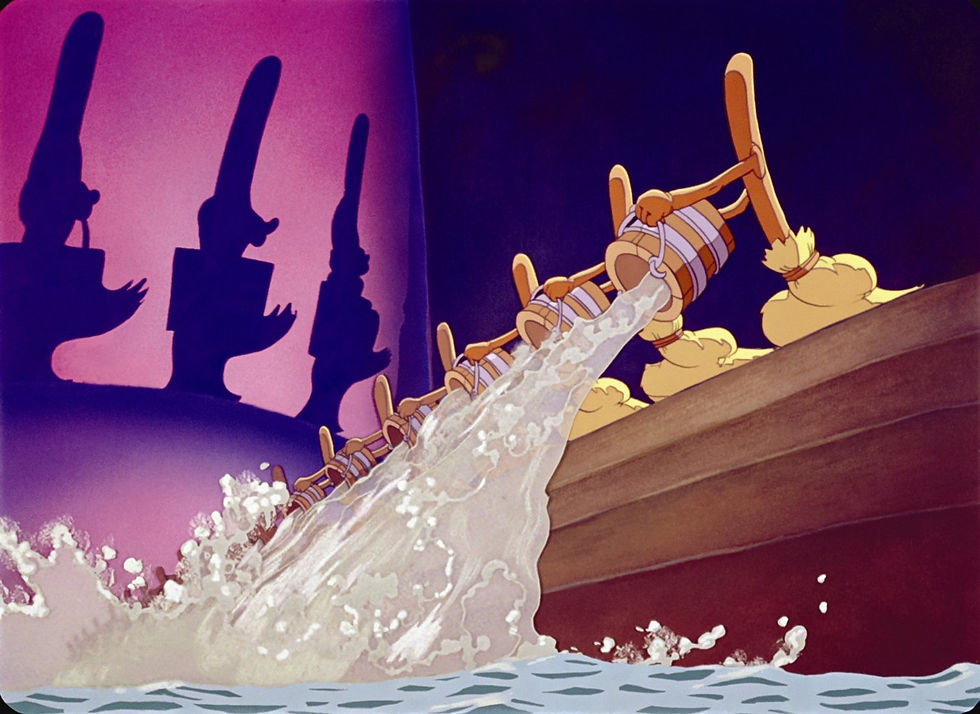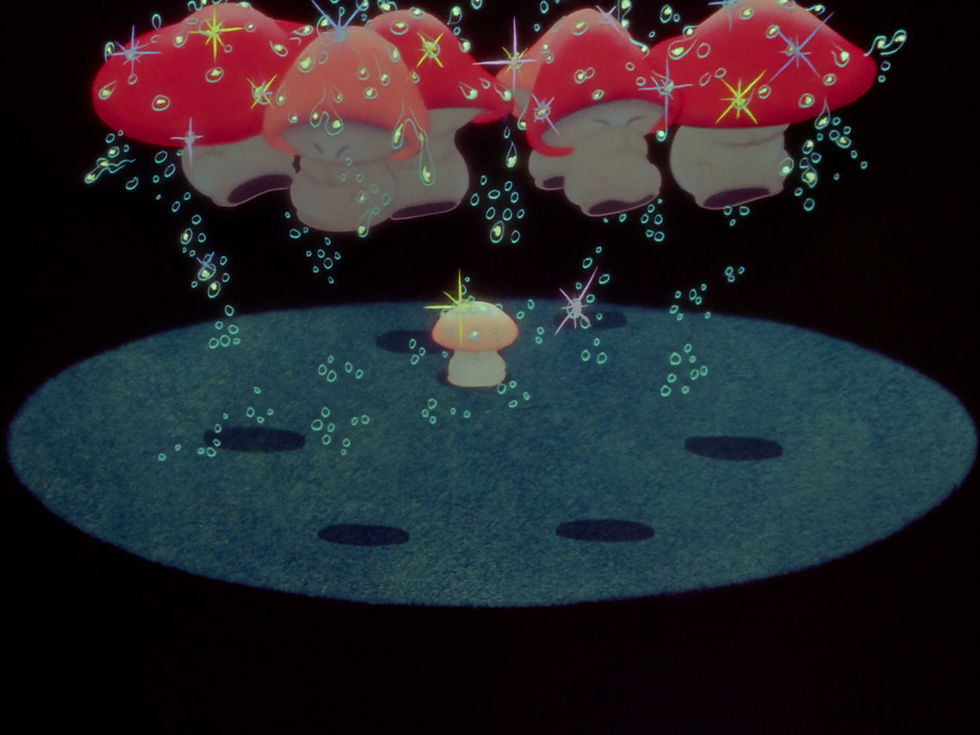Throwback: Fantasia
- Laura Slinger

- Jan 6, 2017
- 4 min read

Fantasia allowed Walt Disney to go back to his roots and re imagine Silly Symphonies, a story that first began in 1928 with Ub Iwerk's innovative "Skeleton Dance". Silly Symphonies was a way for animators to experiment and explore their medium beyond the regular norm for gag cartoons. Once Disney realized he was over budget on his project, a natural extension of his popular musical shorts was to create a full-length animated concert experience; an audiovisual union of the music of Bach, Beethoven, Tchaikovsky and Stravinsky and wonderfully nostalgic traditional animation and effects. Although it was originally a failure during it's first release, with the passage of time it has gradually became an iconic classic. Even today, Fantasia can still be considered one of a kind and revolutionary, it is a complete original it has basically made it's own genre. Although it is not one of my personal favourites, I still do appreciate Fantasia for being so unique and innovative for it's time. The same way that classic musical pieces like Beethoven's 5th symphony are considered timeless, "Fantasia” is also timeless for being such a landmark experience, not just in regard to Disney and animation but to film in general.

Fantasia is the combination of seven animated musical numbers with brief live action scenes in between the shorts with the host Deems Taylor, one of the biggest american radio celebrities of all time. Taylor is a great narrator who brings class, sophistication with a hint of humor and adds to the mood of the film. Along with Taylor is maestro Leopold Stokowski and the Philadelphia Orchestra who conduct and perform all the music throughout the film. Even the visuals of the orchestra are fantastic, the contrast between the silhouettes and the bright backdrop means that it doesn't draw attention from the animation or distract the audience. Another artistic flare is the inclusion of an intermission which audiences are only used to seeing during shows on Broadway or the West End meaning you really get immersed in the experience of a stage production.

Unlike other Disney movies, Fantasia does not have a continuing story line so it's hard to judge the movie as a whole. Taking each scene one by one, starting with the opening "Toccata and Fugue" which is a terrific opening. It is basically a combination of abstract images with the Philadelphia Orchestra. Each image is truly unique and imaginative whilst being perfectly in sync with the music. There isn't much else to this short piece but it is a perfect way to set the tone of the film.

There is the dancing flowers and fairies of Tchaikovsky’s Nutcracker Suite or the majestic winged horses and flirting centaurs and centaurettes in Beethoven’s Pastoral Symphony. Or the great stegosaurus-vs-tyrannosaur battle of Stravinsky’s The Rite of Spring which might not me as impressive as the feature length Disney movie Dinosaur but it is far stronger emotionally. Practically everyone knows something about Fantasia. Best known, of course, is the beloved Sorcerer’s Apprentice sequence with Mickey Mouse and that unstoppable bucket-wielding broomstick: a cautionary fable about the dangers of having more power than wisdom.

And, of course, the inexplicable, almost indescribable antics of the tutu-wearing ballerina hippos and ostriches, as well as the elephants and alligators who attend them, in the Dance of the Hours from Ponchielli’s La Gioconda.

The most memorable scene from Fantasia is the literally haunting Night on Bald Mountain with the enormous bat-winged Bela-Lugosi demon presiding over a riot of cavorting ghouls. In this last sequence, while Disney’s animators were unfortunately unable in the Ave Mariato achieve the same level of emotional force as in the Night on Bald Mountain, they nevertheless did succeed in creating a beautiful allegory of the triumph of light over darkness, goodness over evil. Even before the first strains of the Ave Maria are actually heard, all the sound and fury of Bald Mountain’s raucous hellions is decisively cut short by the simple sound in the distance of a single church bell ringing: quiet, regular, inexorable.

Fantasia consists of four themes within the imagery drawn from a far-ranging array of conceptual fields: nature and the four seasons (Nutcracker); legend and mythology (Sorcerer’s Apprentice and Pastoral Symphony); prehistoric times (Rite of Spring); even Christian concepts of sacred and profane, heaven and hell (Bald Mountain / Ave Maria sequence). Fantasia is a unique experience in pure animation, an ambitious work of imaginative power, a showcase of cutting-edge technique, and a celebration of great music, it is without precedent and without rival. It is also the most original and provocative film in some time. If you don't mind having your imagination stimulated by the stuff of Mr. Disney's fanciful dreams, go to see it.

Easter Eggs
#1 Ave Maria
When the film was scheduled to premiere in New York on November 13, 1940, the finale (the "Ave Maria" sequence) wasn't quite finished. That reel arrived at the theater with just four hours to spare and was spliced onto the rest of the movie.

#2 Re-releasing Fantasia
Disney wanted to turn the film into an evolving work, re-releasing it every few years with new musical segments added and some old ones cycled out. But it never happened, and the film was re-released more or less unchanged every few years, sometimes with cuts or with re-mastered sound.

#3 Flop?
On its initial run, the film only made $1.3 million -- making it an even bigger money-loser than "Pinocchio." The expense and complexity of the Fantasound system meant that the film could only play in about a dozen cities on its 1940-41 release. And World War II kept it from playing overseas. Eventually, however, re-releases made the film profitable. It ultimately grossed $76 million in theaters over the years. Adjusted for inflation, that's $693 million -- enough to make it the 22nd highest-grossing film of all time.

#4 The Three Stooges
For the dancing mushrooms in the segment set to Tchaikovsky's "Nutcracker Suite," the animators found inspiration in the movements of the Three Stooges.

#5 Mickey's comeback
Disney envisioned "The Sorcerer's Apprentice", and later the "Fantasia" feature, as a comeback vehicle for Mickey Mouse -- his popularity had slumped in the late 1930s. In fact, "Fantasia" rebooted him with a new look, the familiar pupil-eyed face we know today.









Comments